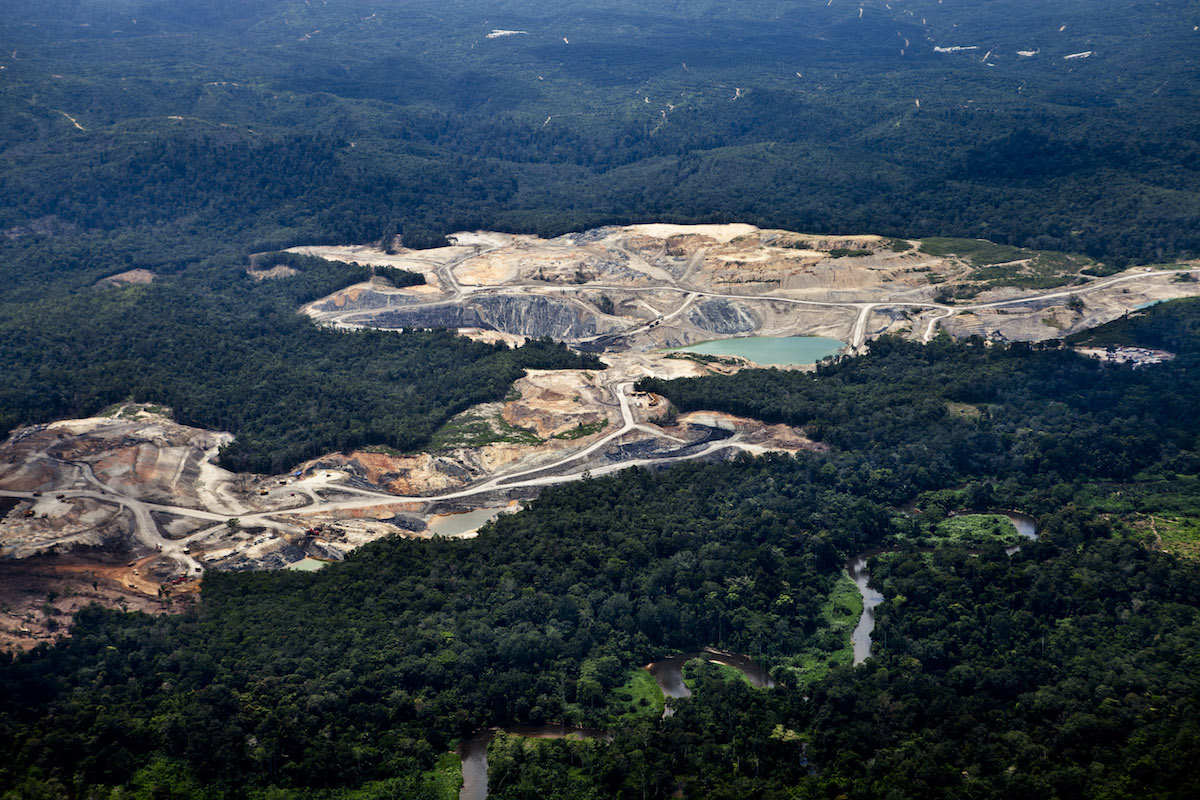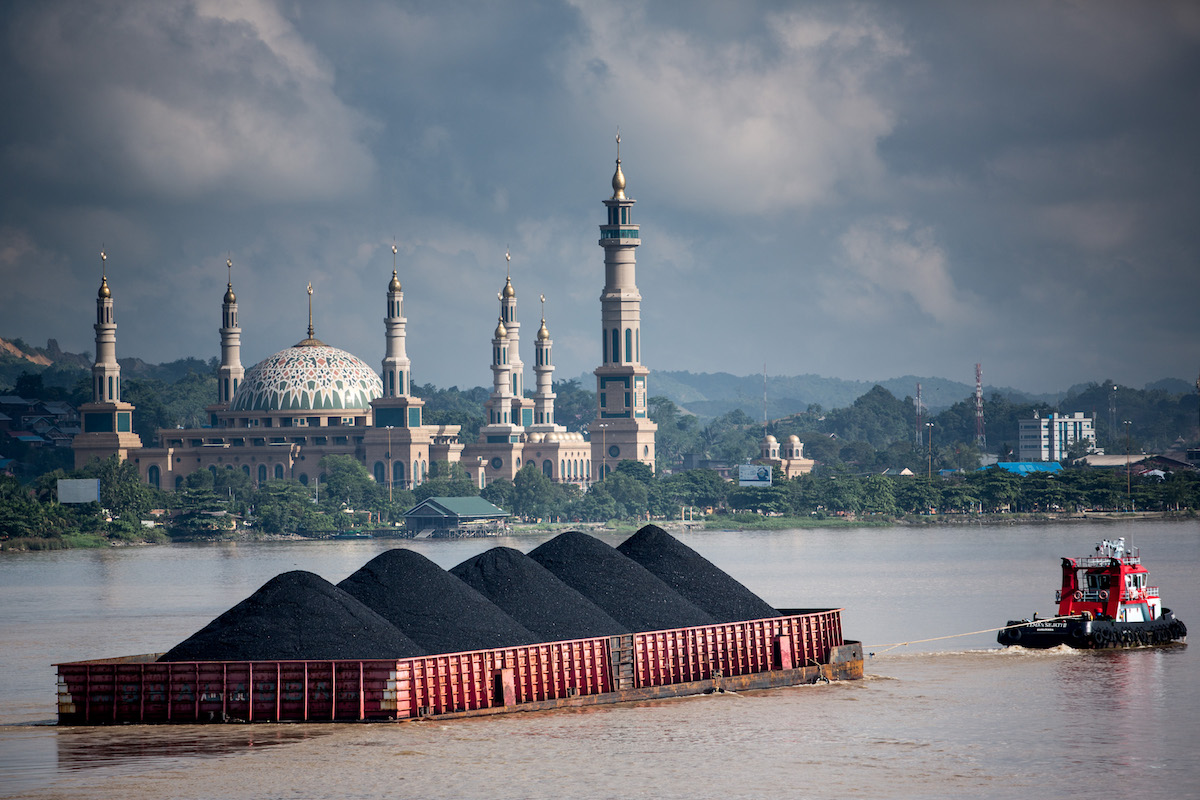- On October 19, Indonesia’s parliament ratified the Paris Agreement.
- During the Paris climate conference, Indonesian President Joko Widodo pledged to reduce emissions to 29 percent below the “business as usual” baseline by 2030.
- Indonesia aims to add 35,000 megawatts of power to its existing national grid by 2019, a plan that calls for building 117 new coal-fired power plants.
- Slower-than-expected progress in its grid expansion plan may help Indonesia meet emissions targets, for now.
Last week, Indonesia joined 81 other nations by signing United Nations Framework Convention on Climate Change’s Paris Agreement, which replaces the Kyoto Protocol as the country’s commitment to reducing its emissions. Domestic ratification of this landmark climate agreement was a significant step for a nation that is both one of the world’s top ten greenhouse gas emitters and home to the one of its largest contiguous forest areas.
In his December speech at the Paris Conference of Parties, Indonesian President Joko Widodo pledged to reduce emissions to a cumulative 2.881 gigatonnes of carbon dioxide by 2030, or 29 percent below “business as usual”. With adequate foreign aid, Indonesia’s commitment increases to 41 percent. Half of the country’s emissions reductions will come from the energy sector, according to the Intended Nationally Determined Contributions (INDC) that Indonesia submitted to the United Nations Framework Convention on Climate Change UNFCC. The other half will largely come from its forestry sector.
Another national priority could challenge this emissions reduction target: the expansion of the national energy grid, and the building of 117 coal-fired power plants to meet increasing energy demand.
Hope for Indonesia staying on track to meet its Paris Agreement targets may lie with the weak state of global commodity markets and the slow pace of the national electric grid expansion. If Indonesia intends to both reduce emissions and rapidly expand its power generating capacity it will have to emphasize the development of low emission “critical” and “supercritical” coal-fired power plants.

Global Demand for Indonesian Coal Exports is Down
Indonesia is the world’s largest exporter of thermal coal, the kind of coal used to generate electricity. Around half of the national production comes from the eastern portion of Kalimantan, the Indonesian part of Borneo Island. Pradarma Rupang, the head of the Indonesian anti-mining coalition (JATAM)’s provincial chapter there, says that coal production is continuing to grow, though the pace of growth is slowing. According to Rupang, this is due to volatility in international commodity prices and reduced demand from China, once Indonesia’s biggest export market.
China has been moving away from energy-intensive industries and installed a tax system that promotes domestic coal sources, according to WordCoal, an industry magazine. Nor is China alone in reducing its appetite for coal imports. Global demand for seaborne coal has reduced, according to analysts at Platts, an energy and commodities information provider. Europe, South Korea and Japan have started imposing carbon emission taxes on coal-fired power plants.
Some of the gap left by weakened demand from China is being filled by other Asian countries. India is now the world’s largest consumer of coal and the top importer of Indonesian coal and Southeast Asian nations like the Philippines and Vietnam are building up their electrical grids.
In a presentation to Japanese investors, the Indonesian Coal Miners Association also mentioned that Indonesian government was coping with the drop in export demand by boosting domestic coal consumption.
Plugging balance shortfall by boosting national demand

National electricity capacity is currently 50,000 MW, according to State Electricity Company, Pt PLN. Mid-2015, the government rolled out a plan to expand that capacity by 35,000 MW by 2019. Twenty thousand megawatts, or 117 of the planned power plants in the expanded grid, will be run on coal, raising concerns about Indonesia’s emission targets.
The majority of Indonesia’s carbon dioxide emissions come from land use, primarily generated by deforestation and peatland destruction. In the last 10 years, this has accounted for 60% of Indonesia’s total emissions, according to climateactiontracker.org. Deforestation for coal mining accounts for a portion of this land use change, but the expansion of the palm oil and pulpwood plantations has had a significantly greater impact. Energy-related emissions are Indonesia’s next biggest contributor, primarily from the burning of oil for transportation and coal for electricity generation.
The increase in power generation is unlikely to significantly change land use emissions from coal mining. Domestic demand only makes up 17 percent of coal sold annually. In 2014, Indonesia exported 359 million tons of coal and used 76 million tons domestically, according to the website Indonesian Investments. By the time all 117 planned coal fired power plants are built, the government estimates that domestic demand will warrant 80-90 million tons more coal.
So far, though, grid development has been slow. This month, PLN procurement director Supangkat Iwan Santoso acknowledged in the Jakarta Post that his agency has handed out less than half (14,069 MW) of the contracts under the 35,000 MW project.
But increasing Indonesia’s power generation capacity by 70 percent, and relying heavily on coal to do so, would have serious impacts on energy-related emissions. To address this, the government of Indonesia is targeting efficiency gains and “clean coal” technologies.

Japan has been an important partner in this, investing $150 million so far to install more energy-efficient machines in Indonesian factories through a scheme called Joint Crediting Mechanism. These machine upgrades count towards both Japan and Indonesia’s nationally determined contributions. Even small efficiency gains, such as upgrading chillers at two frozen fish factories in West Java, reduce emissions that are applied to the national target.
On a larger scale, Indonesia’s INDC plans indicate that 44 percent of the new generating capacity will meet emissions capture standards of critical and supercritical plants. To afford this, and to have the capacity to carry it out, President Widodo’s government can be expected to need a hefty dose of foreign investment, technical assistance, and other aid. And only then may his hopes for energy sovereignty and emissions reduction be mutually achieved.
Indonesia’s plan to build more than 100 new coal power plants seems out of synch with its promise to reduce emissions levels, but the slow pace of progress on energy projects in Indonesia likely means that its energy policy and climate change commitments can coexist for now.